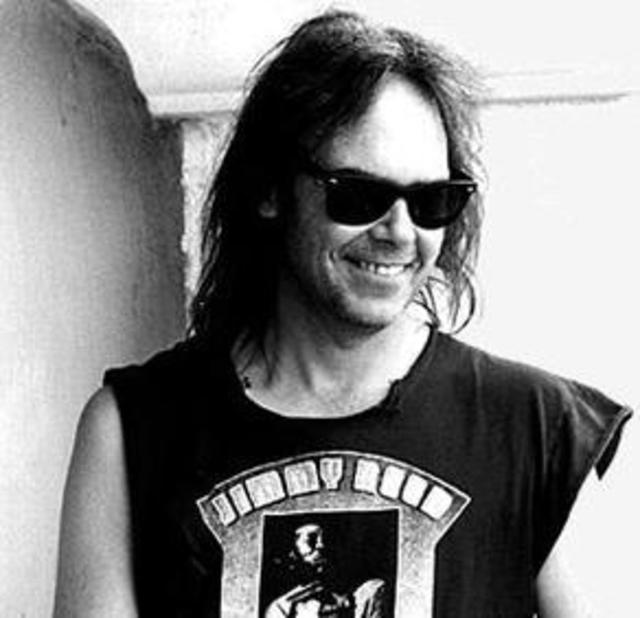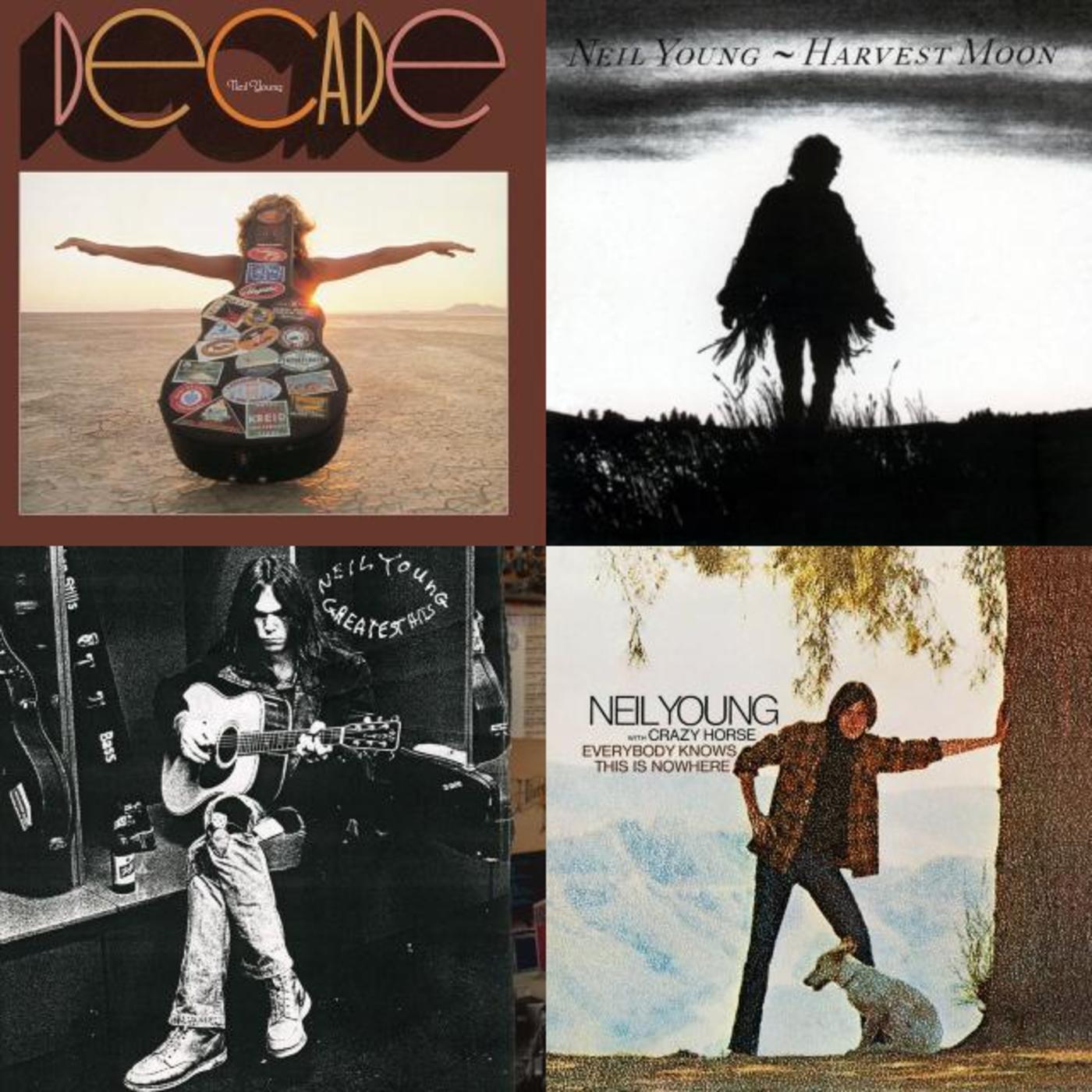Neil Young

Inductee: Neil Young (vocals, guitar, banjo, keyboards, harmonica; born November 12, 1945)Neil Young is one of rock and roll's greatest songwriters and performers. In a career that extends back to his mid-Sixties roots as a coffeehouse folkie in his native Canada, this principled and unpredictable maverick has pursued an often winding course across the rock and roll landscape. He's been a cult hero, a chart-topping rock star, and all things in-between, remaining true to his restless muse all the while. At various times, Young has delved into folk, country, garage-rock and grunge. His biggest album, Harvest (1972) , apotheosized the laid-back singer/songwriter genre he helped invent. By contrast, Rust Never Sleeps (1979), Young's second-best seller, was a loud, brawling masterpiece whose title track, an homage to Johnny Rotten of the Sex Pistols, contained the oft-quoted line "Better to burn out than it is to rust."Several of his more modest-selling titles - for example, Tonight's the Night, Comes a Time and Trans - contain some of his most trenchant performances. It is typical of Young that he followed his most polished and popular album, Harvest, with one of his most raw and uncommercial, Time Fades Away. While he's avoided sticking to one style for very long, the unifying factors throughout Young's peripatetic musical journey have been his unmistakable voice, his raw and expressive guitar playing, and his consummate songwriting skill.In the early 1960s the Canadian-born Young performed as a self-accompanied folksinger on the Toronto scene. As a budding rock and roller, he hooked up with such groups as the Squires and the Mynah Birds; the latter was briefly signed to Motown and also included budding funk-rocker Rick James. Buffalo Springfield came together in 1966, inaugurating a collaboration between Young and Stephen Stills that has been intermittently revived down the decades. As a member of Buffalo Springfield, Young contributed lead guitar and a raft of bittersweet folk-rock originals that included "Mr. Soul," "Broken Arrow" and "Expecting to Fly."Young's solo career took flight in 1969 with Neil Young, an album of pretty, brooding songs that included "The Loner." This singer/songwriter debut was one of the first solo albums by a rock and roll figure, and it quietly presaged a major direction that music would take in the Seventies. In the more than 30 years since that album's appearance, Young has recorded and toured tirelessly, releasing 35 albums. In addition to his prolific solo output, Young has undertaken occasional liaisons with Crosby, Stills and Nash (1970's Déjà vu, 1988's American Dream, 1999's Looking Forward) and with Stephen Stills (1976's Long May You Run, credited to the Stills-Young Band).More lasting has been Young's association with Crazy Horse, his steadiest backup band since 1969. Crazy Horse first turned up on Everybody Knows This Is Nowhere, Young's second album, which contained the lengthy, jam-filled "Down by the River" and "Cowgirl in the Sand" and one of Young's most memorable songs, "Cinnamon Girl." The group provided a solid, rocking base for Young's songs and solos, and they've played with him on albums ranging from Everybody Knows This Is Nowhere and After the Gold Rush (1970) to Ragged Glory (1990) and Broken Arrow (1996). The mellower, more acoustic and folk-flavored side of Neil Young has surfaced on numerous albums, notably Harvest (1972) and its sequel, Harvest Moon (1992). He has also made detours into country music (1985's Old Ways) and big-band blues (1988's This Note's for You). The one entity that Neil Young has come back to again and again, however, is Crazy Horse.The original Crazy Horse included guitarist Danny Whitten, bass player Billy Talbot and drummer Ralph Molina. Whitten died of a heroin overdose in 1972, and his loss inspired much of the material on Young's tempestuous and biographical Tonight's the Night. Its release was delayed until 1975 out of fear it was too raw for the market Young had courted so successfully with Harvest (1972) and its #1 hit, "Heart of Gold." Frank Sampedro joined Crazy Horse on guitar in 1975, making his debut on Young's Zuma album. Young has termed his association with Crazy Horse "the essence of my musical life. This is the core, the smoldering thing I come back to over and over again....If I had never done anything else, the Crazy Horse stuff would just stand on its own."Over the years, Young has made his mark as an incorrigible artist with a distinctive, unvarnished style on electric guitar. His long, feedback-filled solos owe a debt to Jimi Hendrix, in spirit if not strictly in style. Young attributes his uncompromising approach to his early taste of success. The mass popularity he attained with "Heart of Gold," a #1 hit in 1972, caused him to balk. "This song put me in the middle of the road," he wrote in the liner notes to his retrospective Decade anthology. "Traveling there soon became a bore so I headed for the ditch. A rougher ride, but I saw more interesting people there."Nonetheless, one of his most successful albums, Rust Never Sleeps, was also one of his most uncompromising. Released in 1979, Rust Never Sleeps became an instant favorite of fans and critics. Mixing acoustic and electric numbers, it was largely inspired by the punk-rock insurgency – especially its anthemic title track, "Rust Never Sleeps (Hey Hey, My My [Into the Black]). Rust Never Sleeps was followed by a concert video and double live album, Live Rust. At this point, Young was at a peak of popularity rivaling that of the early Seventies, when he was on top with After the Gold Rush and Harvest. Displaying no interest in repeating a formula, however, he followed Rust with the quiet, acoustic Hawks & Doves (1980) and the squalling, electric Re-ac-tor (1981).Young's ride became particularly bumpy during the Eighties, following his move from Reprise to Geffen Records. He veered somewhat recklessly from style to style, moving from computerized music made with sequencers and samplers (Trans) to backward-looking neo-rockabilly for the Reagan era (Everybody's Rockin') to a return to roots on the countrified Old Ways. In 1985, Young performed at the Live Aid fundraising extravaganza and then became one of the organizers and participants in Farm Aid, a yearly concert and consciousness-raising event. Young and his wife, Pegi, also founded San Francisco's Bridge School, a learning center for handicapped children with communication disabilities.After his checkered tenure at Geffen Records, during which Young was actually sued by the label for allegedly releasing non-commercial records, Young returned to the Reprise label. Like a man unshackled, Neil Young released the buoyant, bluesy and horn-stoked This Note's for You, which found him backed by the ten-man Bluenotes. The title track mocked corporate sponsorship and MTV. Ironically, though it had been banned by the music channel upon its release in 1988, "This Note's for You" won MTV's Best Video award a year later.Young's career became more clearly focused, though no less given to willful shifts in style, mood and volume, with the release of Freedom 1989. Considered a return to form and his most vital work since Rust Never Sleeps, it included acoustic and electric versions of "Rockin' in the Free World." From there, Young entered the Nineties full of fire and drive. He kicked off the decade with Ragged Glory, which reunited him with Crazy Horse, and collaborated with alternative-rock heroes Pearl Jam on 1995's Mirror Ball. He also nodded to his most popular album, 1972's Harvest, by releasing a sequel, Harvest Moon, in 1992. Songs like "From Hank to Hendrix" and the title track assessed a generation's coming of age and paid tribute to the enduring verities of friends, family and unconditional love. In the Nineties, Young's studio releases were often followed by tours, live albums and video documentaries, revealing his relish for the energy and spontaneity of the stage.Throughout his self-described "bumpy ride," Young has consistently demonstrated the unbridled passion of an artist who understands that self-renewal is the only way to avoid burning out. For this reason, he has remained one of the most significant artists of the rock and roll era.

